Abstract
Forty-three female C57/BL and C3H mice were inoculated with 2.7 X 10(6) Mycobacterium lepraemurium into each hind footpad. The foot thickness and the number of acid-fast bacilli in the footpad and popliteal and inquinal lymph nodes were recorded. In addition the morphological index and the mean bacillary length were determined in the footpad and in the popliteal lymph node. The bacilli multiplied in both strains during the first 4 weeks after inoculation. After that time no further increase in acid-fast bacilli was observed in the C57/BL strain; the bacilli became elongated and the morphological index decreased. These changes were preceded by a local swelling of the footpad due to the onset of an immune reaction. Thus, under the present conditions, C57/BL mice were able to resist experimental infection with M. lepraemurium by developing an immune response. In C3H mice no indication of an immune reaction was detected, and the bacilli continued to multiply throughout the observation period. The mouse footpad model seems to provide an excellent basis for the use of experimental murine leprosy to study immunity to mycobacterial infections. Certain aspects of the present model are discussed in relation to the mouse footpad model as used in the study of M. leprae infection in mice.
Full text
PDF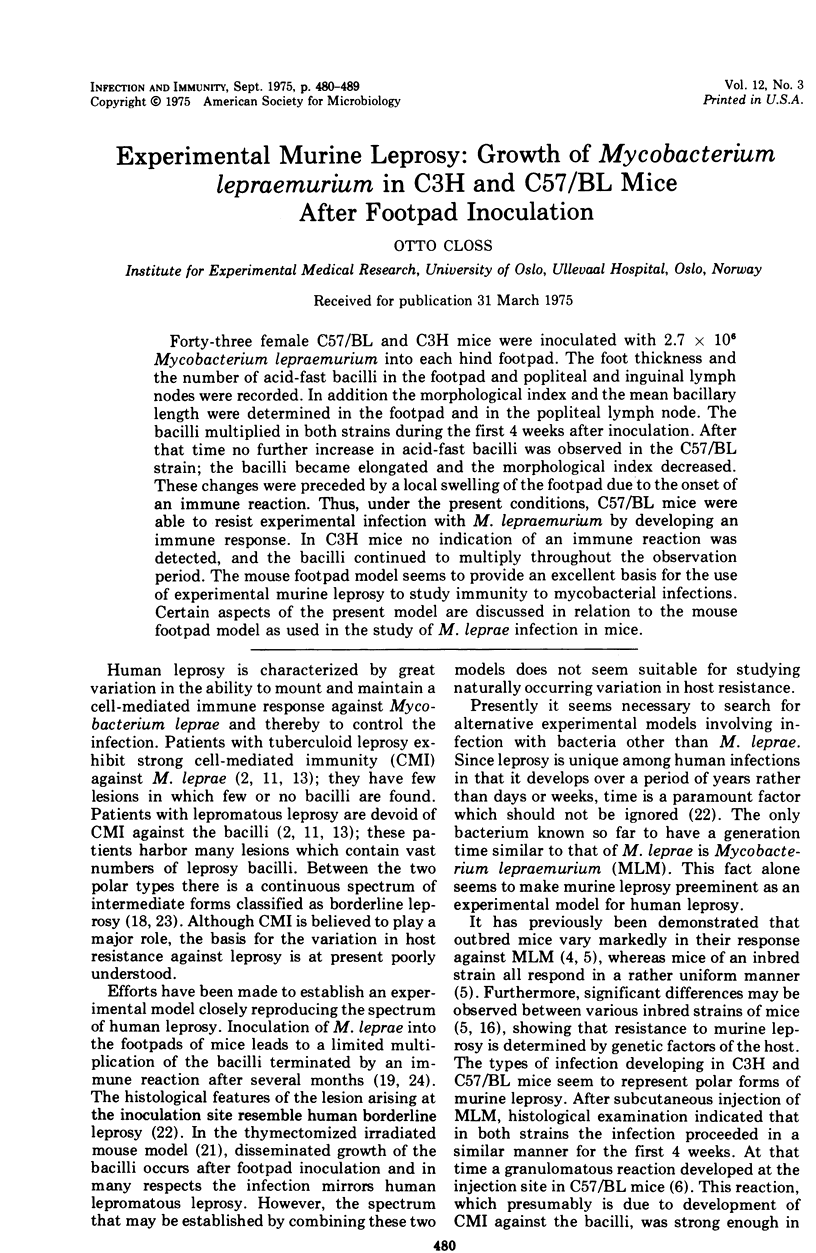
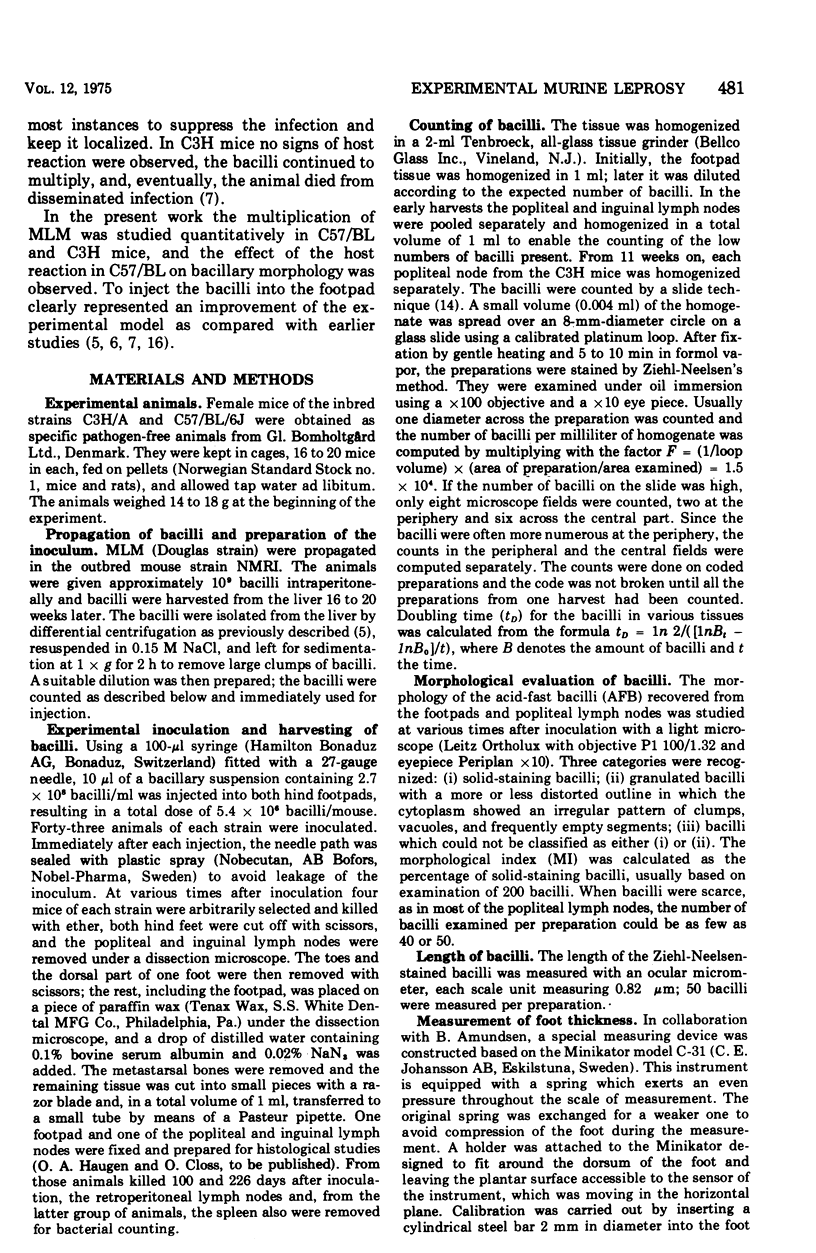
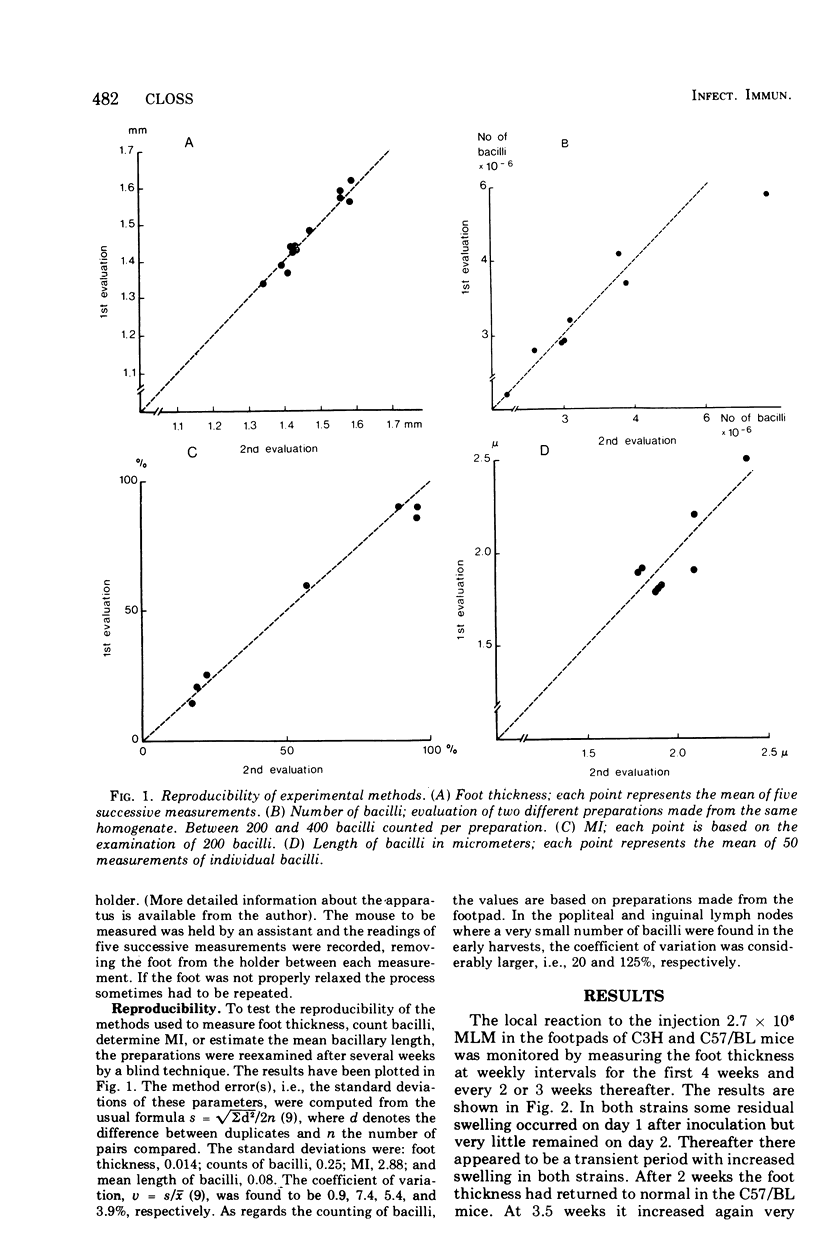
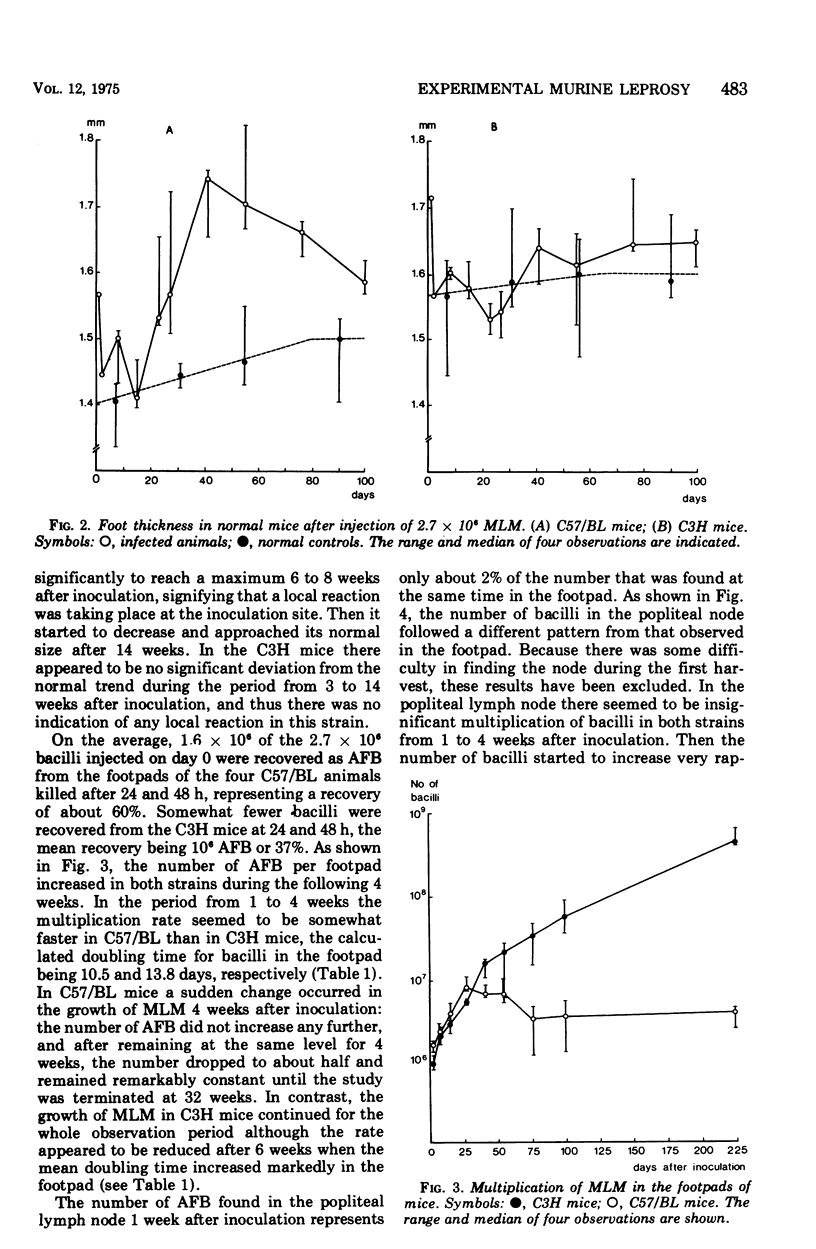
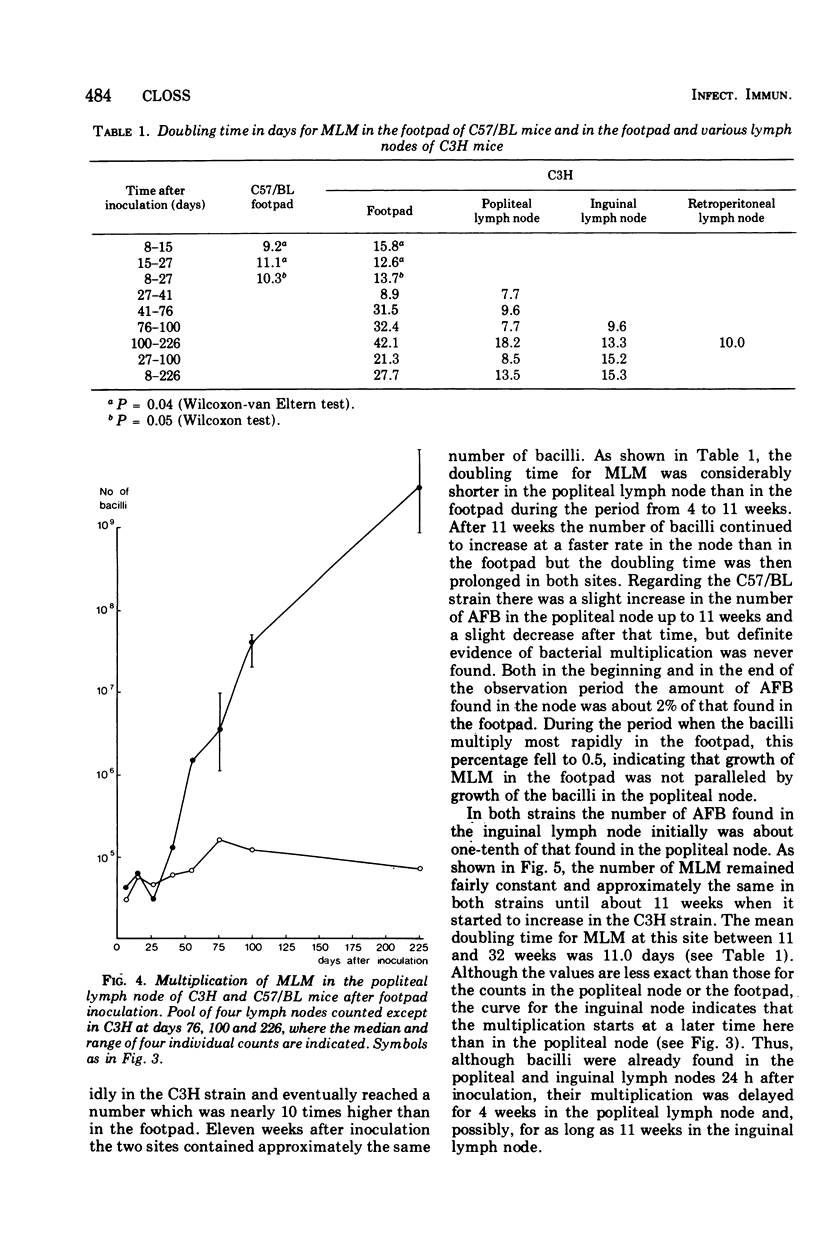
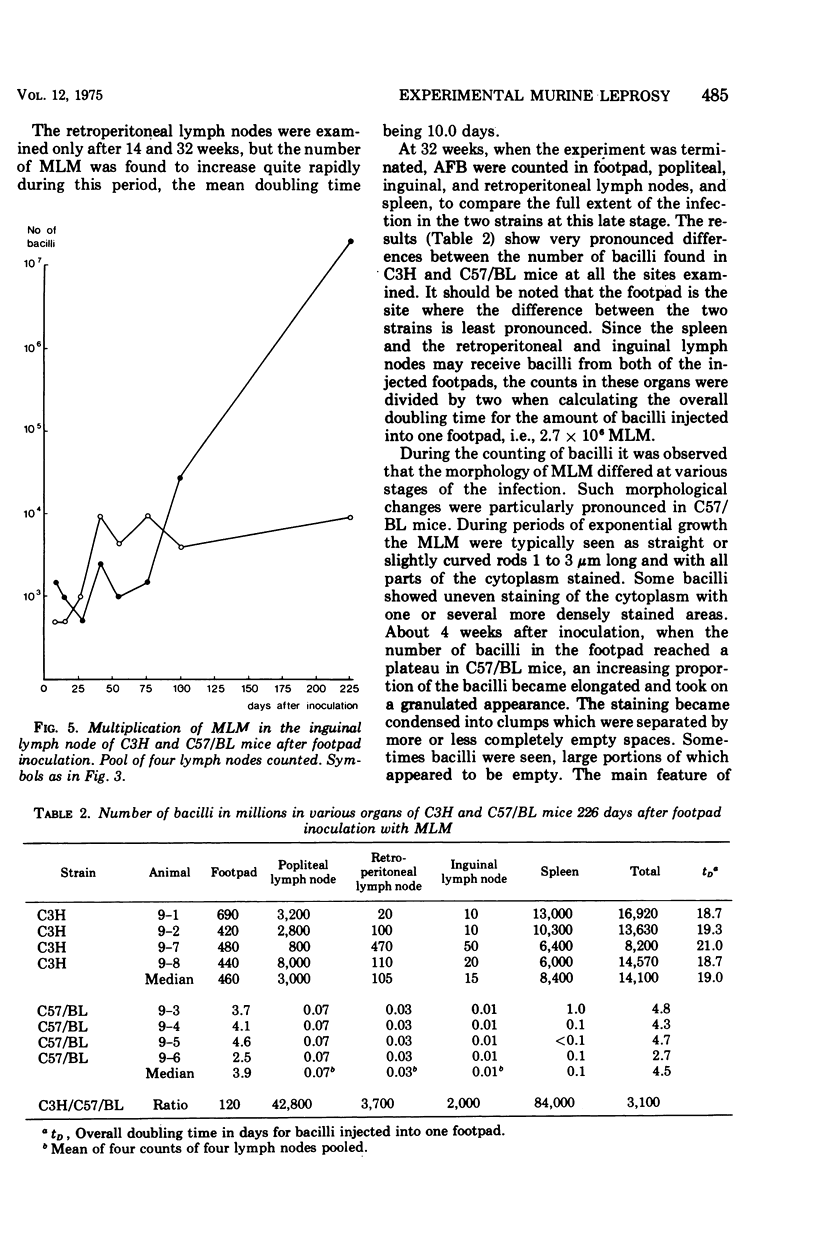
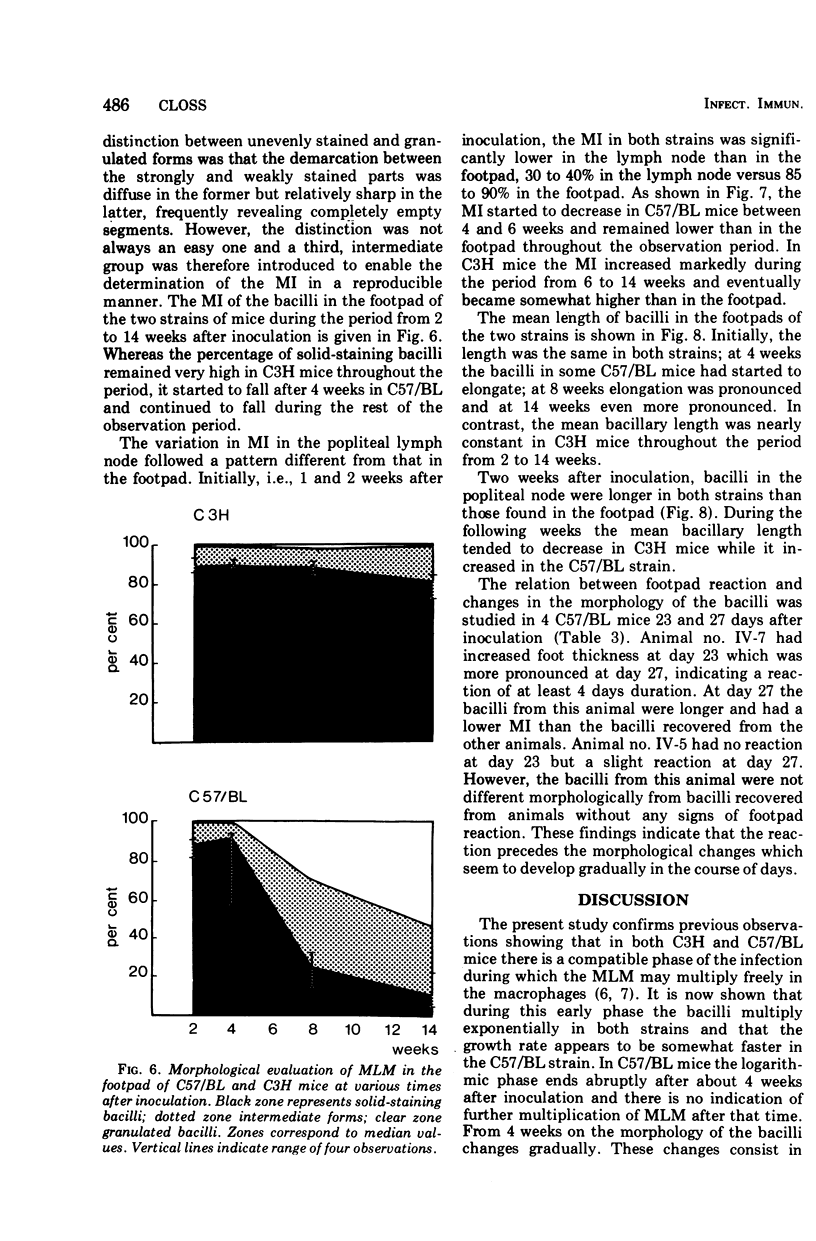

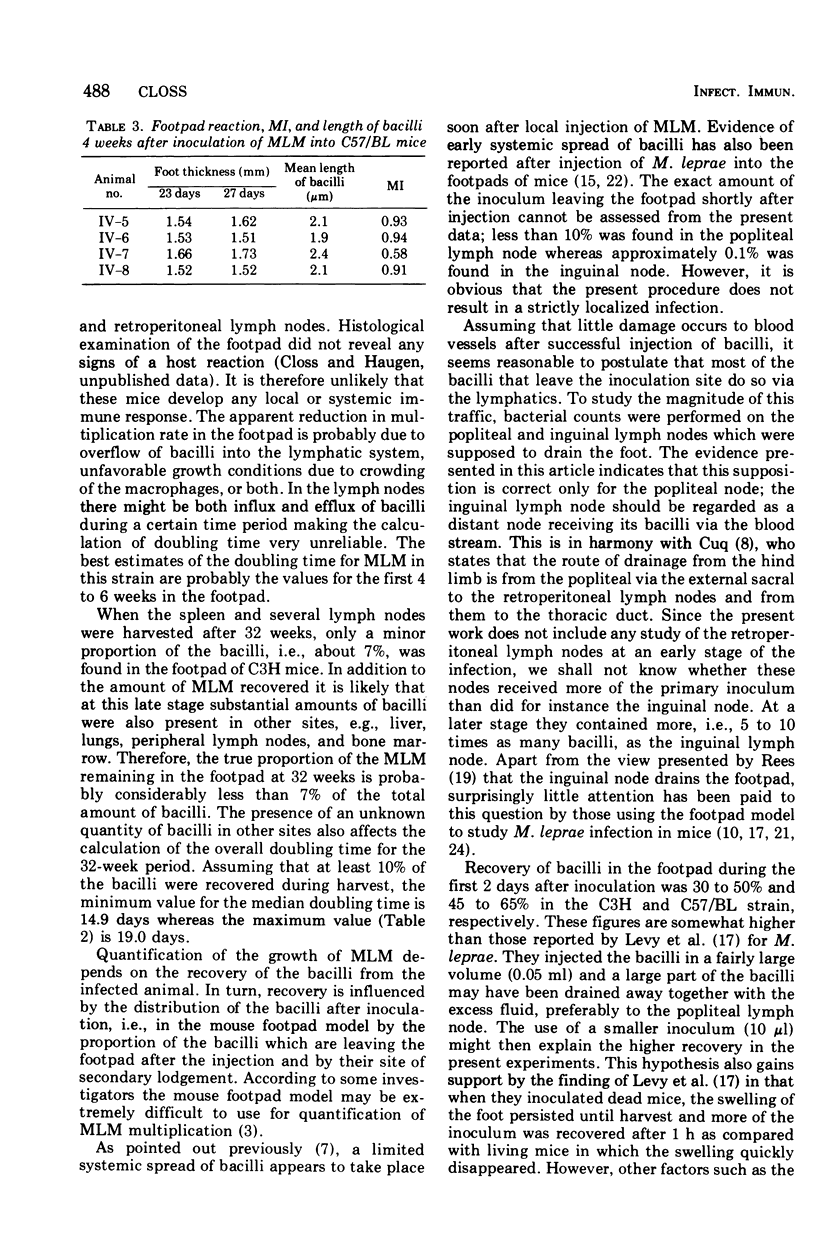
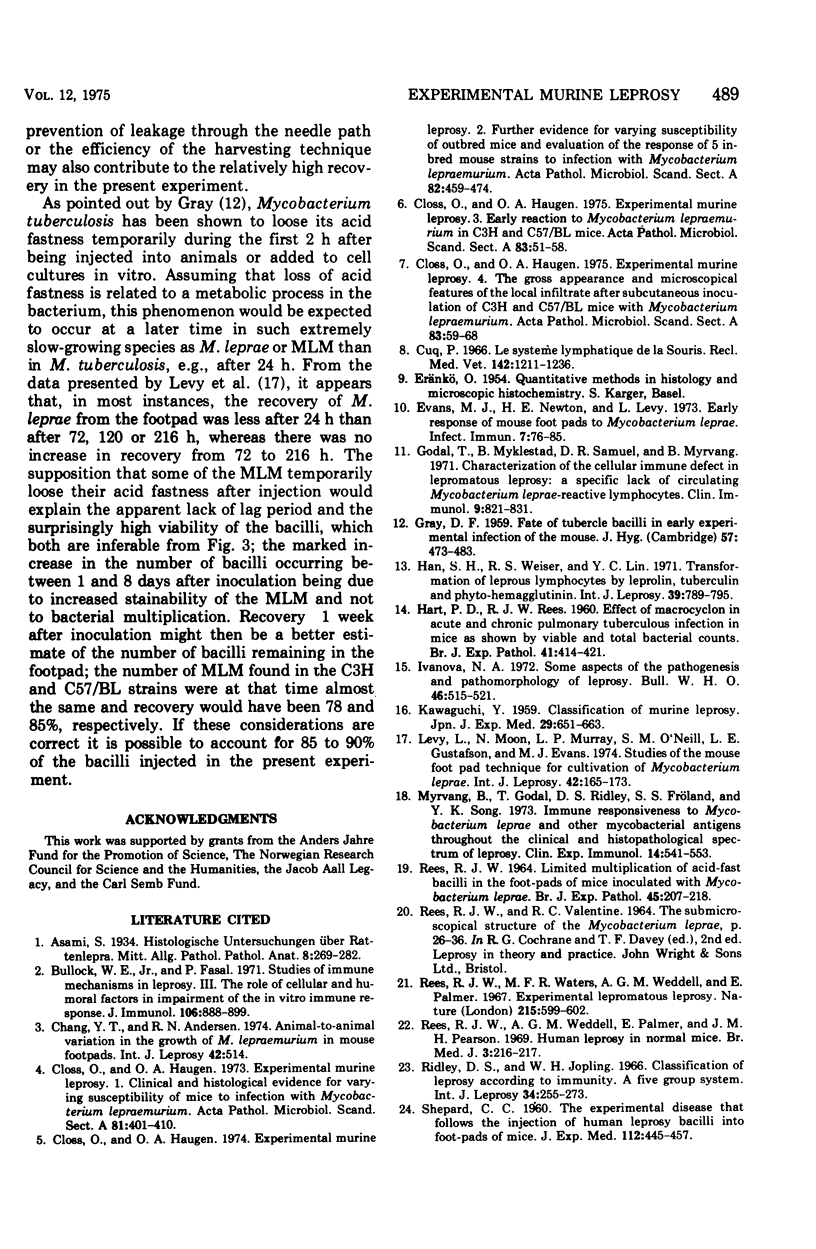
Selected References
These references are in PubMed. This may not be the complete list of references from this article.
- Bullock W. E., Jr, Fasal P. Studies of immune mechanisms in leprosy. 3. The role of cellular and humoral factors in impairment of the in vitro immune response. J Immunol. 1971 Apr;106(4):888–899. [PubMed] [Google Scholar]
- Closs O., Haugen O. A. Experimental murine leprosy. 2. Further evidence for varying susceptibility of outbred mice and evaluation of the response of 5 inbred mouse strains to infection with Mycobacterium lepraemurium. Acta Pathol Microbiol Scand A. 1974 Jul;82(4):459–474. [PubMed] [Google Scholar]
- Closs O., Haugen O. A. Experimental murine leprosy. 3. Early local reaction to mycobacterium lepraemurium in C3H and C57/BL mice. Acta Pathol Microbiol Scand A. 1975 Jan;83(1):51–58. [PubMed] [Google Scholar]
- Closs O., Haugen O. A. Experimental murine leprosy. 4. The gross appearance and microscopic features of the local infiltrate after subcutaneous inoculation of C3H and C57/BL mice with mycobacterium lepraemurium. Acta Pathol Microbiol Scand A. 1975 Jan;83(1):59–68. [PubMed] [Google Scholar]
- Closs O., Haugen O. A. Experimental murine leprosy. I. Clinical histological evidence for varying susceptibility of mice to infection with Mycobacterium lepraemurium. Acta Pathol Microbiol Scand A. 1973 Jul;81(4):401–410. [PubMed] [Google Scholar]
- Evans M. J., Newton H. E., Levy L. Early response of mouse foot pads to Mycobacterium laprae. Infect Immun. 1973 Jan;7(1):76–85. doi: 10.1128/iai.7.1.76-85.1973. [DOI] [PMC free article] [PubMed] [Google Scholar]
- GRAY D. F. Fate of tubercle bacilli in early experimental infection of the mouse. J Hyg (Lond) 1959 Dec;57:473–483. doi: 10.1017/s0022172400020313. [DOI] [PMC free article] [PubMed] [Google Scholar]
- Godal T., Myklestad B., Samuel D. R., Myrvang B. Characterization of the cellular immune defect in lepromatous leprosy: a specific lack of circulating Mycobacterium leprae-reactive lymphocytes. Clin Exp Immunol. 1971 Dec;9(6):821–831. [PMC free article] [PubMed] [Google Scholar]
- HART P. D., REES R. J. Effect of macrocyclon in acute and chronic pulmonary tuberculous infection in mice as shown by viable and total bacterial counts. Br J Exp Pathol. 1960 Aug;41:414–421. [PMC free article] [PubMed] [Google Scholar]
- Han S. H., Weiser R. S., Lin Y. C. Transformation of leprous lymphocytes by leprolin, tuberculin and phytohemagglutinin. Int J Lepr Other Mycobact Dis. 1971 Oct-Dec;39(4):789–795. [PubMed] [Google Scholar]
- Ivanova N. A. Some aspects of the pathogenesis and pathomorphology of leprosy. Bull World Health Organ. 1972;46(4):515–521. [PMC free article] [PubMed] [Google Scholar]
- KAWAGUCHI Y. Classification of mouse leprosy. Jpn J Exp Med. 1959 Dec;29:651–663. [PubMed] [Google Scholar]
- Levy L., Moon N., Murray L. P., O'Neill S. M., Gustafson L. E., Evans M. J. Studies of the mouse foot pad technic for cultivation of Mycobacterium leprae. 1. Fate of inoculated organisms. Int J Lepr Other Mycobact Dis. 1974 Apr-Jun;42(2):165–173. [PubMed] [Google Scholar]
- Myrvang B., Godal T., Ridley D. S., Fröland S. S., Song Y. K. Immune responsiveness to Mycobacterium leprae and other mycobacterial antigens throughout the clinical and histopathological spectrum of leprosy. Clin Exp Immunol. 1973 Aug;14(4):541–553. [PMC free article] [PubMed] [Google Scholar]
- REES R. J. LIMITED MULTIPLICATION OF ACID-FAST BACILLI IN THE FOOT-PADS OF MICE INOCULATED WITH MYCOBACTERIUM LEPRAE. Br J Exp Pathol. 1964 Apr;45:207–218. [PMC free article] [PubMed] [Google Scholar]
- Rees R. J., Waters M. F., Weddell A. G., Palmer E. Experimental lepromatous leprosy. Nature. 1967 Aug 5;215(5101):599–602. doi: 10.1038/215599a0. [DOI] [PubMed] [Google Scholar]
- Rees R. J., Weddell A. G., Palmer E., Pearson J. M. Human leprosy in normal mice. Br Med J. 1969 Jul 26;3(5664):216–217. doi: 10.1136/bmj.3.5664.216. [DOI] [PMC free article] [PubMed] [Google Scholar]
- Ridley D. S., Jopling W. H. Classification of leprosy according to immunity. A five-group system. Int J Lepr Other Mycobact Dis. 1966 Jul-Sep;34(3):255–273. [PubMed] [Google Scholar]


